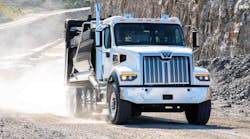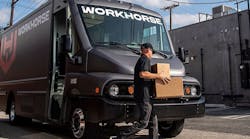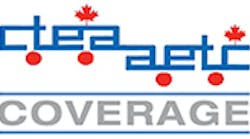Regulators at the provincial and federal levels reported on truck-related regulations at the Canadian Transportation Equipment Association’s annual Manufacturers Conference in Vancouver, British Columbia.
Given the recent spike in regulatory activity in the United States, Canadian regulators are doing what they can to meet the needs of Canadians while at the same time minimizing the regulatory differences between U S and Canadian vehicles, many of which cross the border and operate in both nations.
“Alignment of Canada/U.S. regulations is important given the commonality of vehicle offerings and cross border trade,” said Josephine Davidson, section head for Heavy Duty Vehicle Regulatory Development, Transportation Division of Environment and Climate Change Canada. “A policy of alignment allows the development of stringent regulations while reducing administrative burden to industry and government.”
The Canada-United States Air Quality Agreement (AQA) calls for substantial collaboration to support aligned standards for vehicles and engines, she pointed out.
While Canada’s Phase 2 regulations for fuel economy and greenhouse gases will follow those of the US closely, they will not be identical. Davidson pointed out that Phase 1 included Canada-specific considerations such as the administrative requirements associated with Canada’s National Emission Mark.
Work is currently underway to develop proposed Phase 2 regulations in Canada that align with the U.S. program while taking into account differences in the Canadian market.
The proposed regulations will be published in Canada Gazette, Part I this winter, followed by a 75 day comment period.
ECCC will continue to work closely with stakeholders during the regulatory development process, Davidson said.
Key elements of Canada’s Draft Phase 2 Regulations will:
• Apply to manufacturers and importers of new trailers pulled by tractors, but not owners or operators. It also will apply to manufacturers and importers of new on-road heavy-duty vehicles and engines.
• Vans will be the focal point of trailer-related sections of the regulation. Compliance would be assessed using a prescribed compliance equation with variables such as trailer aerodynamics, tire rolling resistance, automatic tire inflation systems (ATIS) or tire pressure monitoring systems (TPMS), and lightweight components.
GHG end of model year reporting requirements
Viliam Glazduri, a program engineer for the Regulatory Administration Section of Environment and Climate Change Canada’s Transportation Division, outlined the reporting requirements placed on manufacturers and importers of heavy-duty vehicles and/or engines.
The requirements apply to those selling new vehicles and engines. Used equipment sales are exempt.
OEMs and their dealers (Regulatees) must comply. OEMs may supply the data that their dealers may require.
Glazduri said Environment and Climate Change Canada has developed reporting templates that accommodate both Regulatees and OEMs.
Glazduri offered this advice:
• Determine whether you are required to submit an end of model year GHG report. Contact ECCC if you are not sure.
• If you are a Regulatee, you still need to file a report, even though an OEM is submitting emission data for you.
For more information, email [email protected],
phone (819) 938-4755,
or visit the Guidance Document at http://www.ec.gc.ca/lcpe-cepa/default.asp?lang=En&n=71EF09D7-1.
Changes in British Columbia
Jan Lansing with the British Columbia Ministry of Transportation and Infrastructure, reported a few regulatory changes that have been implemented in British Columbia.
Among them:
• New permit system.
• Improved online access, gives carriers the ability to upload their fleet info. Allows copying and amending previous permits, provides turn-by-turn routing detail.
• The British Columbia vehicle inspection manual has been updated and reformatted. ♦
For more information on Canadian Transportation
Equipment Association check out CTEA.












